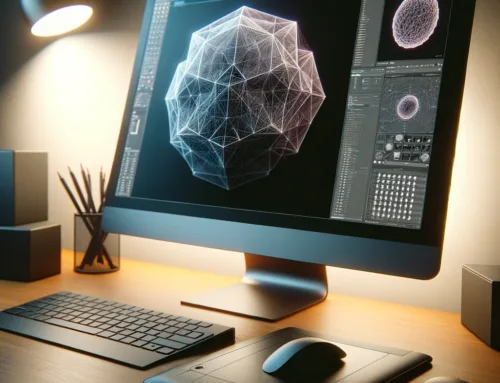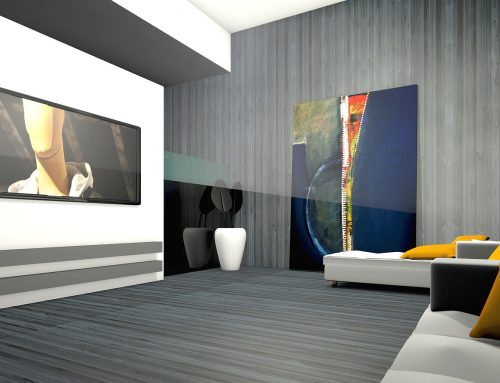Wie Sie mit Unity ganz einfach Shader erstellen können.
Unity 2018.1 bingt neue Maßstäbe in Bezug auf Kontrolle und Flexibilität. Eines der coolsten Features in 2018.1 ist Shader Graph. Egal, ob Sie Anfänger oder Profi sind, es hilft ihnen dabei, eine Reihe von Shader zu kreieren: fließendes Lava, kleibriger Schleim, wunderschöne Seen, blinkende LEDs und vieles mehr.
Der Shader Graph ermöglicht es ihnen, ihre Shader visuell zu erstellen. Anstatt Code von Hand zu schreiben, erstellen und verbinden Sie Nodes in einem Graphennetzwerk. Folgende Dinge lassen sich mit Shader Graph umsetzen:
-
Verändern Sie das Aussehen ihrer Oberfläche.
-
Animieren und Verzerren Sie UVs.
-
Modifizieren Sie das Aussehen ihrer Objekte mit den bekannten Bildanpassungsoptionen.
-
Ändern Sie die Oberfläche ihres Objekts auf der Grundlage nützlicher Informationen, wie z.B. Normals oder Distanz zur Kamera.
-
Stellen Sie Eigenschaften dem Materialinspektor zur Verfügung, so dass Sie die Visuals eines Shaders im Kontext einer Szene schnell anpassen können.
-
Teilen Sie Node-Netzwerke zwischen mehreren Graphen und Benutzern, indem Sie Teilgraphen erstellen.
-
Erstellen Sie ihre eigenen benutzerdefinierten Shader-Diagrammnodes mit Hilfe von C# und HLSL.
Das Graph-Framework gibt sofortiges Feedback zu den Änderungen und es ist einfach ausreichend, dass neue Benutzer in die Shader-Erstellung einbezogen werden können.
Das Graph-Framework ist jetzt in der Beta-Version verfügbar. Laden Sie das Beispielprojekt herunter, öffnen Sie es mit Unity 2018.1 beta und beginnen Sie mit der Erkundung. Sie können Shader Graph auch über den Package Manager beziehen.
Shader Graph ist so konzipiert, dass es mit einem weiteren Feature von Unity 2018.1 zusammenarbeitet: Scriptable Render Pipeline (SRP). Daher können Sie es nicht mit dem Built-In Unity Renderer verwenden. Es wird mit Unterstützung für:
-
Die High-Definition Render-Pipeline.
-
Die Lightweight Render-Pipeline.
Sie werden auch in der Lage sein, das System zu erweitern, um Shader für jedes benutzerdefinierte SRP, das sie schreiben, zu exportieren:
In dem folgenden Video finden Sie ein Tutorial zum Shader Graph:
Wie erstellt man Shader Graphs?
In Unity 2018.1 erscheint ein Shader-Graph als normaler Shader. Um ein Shader-Diagramm zu erstellen, klicken Sie auf das Menü Erstellen und wählen aus der Dropdown-Liste „Shader-Diagramm“. Dadurch wird ein Shader Graph-Asset im Projekt erstellt. Sie können auf das Asset doppelklicken oder die Schaltfläche „Graph öffnen“ wählen, um das Fenster „Shader Graph Edit“ aufzurufen.
Wenn Sie den Shader Graph öffnen, beginnen Sie mit dem „Master Node“. Sie verbinden Nodes mit dem Master-Nodes, um das Aussehen ihrer Oberfläche zu erzeugen. Weitere Informationen zu den zugrunde liegenden Materialmodellen finden Sie in der vorhandenen Unity Standard Shader Dokumentation.
Sie können ihre Oberfläche schnell bearbeiten, indem Sie die Standardwerte ändern. Noch aufregender ist allerdings das Hinzufügen von Texturen und anderen komplexen Interaktionen. Um einen Node hinzuzufügen, klicken Sie einfach mit der rechten Maustaste und wählen Sie „Nodes erstellen“.
Jeder enthaltene Shader Graph Node hat eine Reihe von Eingaben und es wurden Standardwerte eingefügt, die Sie nach Belieben anpassen können.
Das Hinzufügen einer Textur (oder anderer Assets) ist ebenfalls sehr einfach, erstellen Sie einfach einen Node dieses Asset-Typs und verbinden Sie ihn.
Ihr Shader Graph Shader ist wie ein normaler Shader in Unity. Klicken Sie mit der rechten Maustaste auf ein beliebiges Objekt im Inspektor und wählen Sie Material anlegen. Sie können mehrere Materialien aus demselben Shader erstellen.
Sie können ganz einfach Parameter in ihrem Shader freigeben, so dass sie in jedem Material, das Sie mit ihrem Shader erstellen, überschrieben werden können. Im Shader-Graphen klicken Sie mit der rechten Maustaste auf einen beliebigen variablen Node und wählen Sie „Convert to Property“. Diese exponierten Parameter erscheinen im Materialinspektor für jedes Material, das Sie mit ihrem Shader erstellen.
Vielen Dank fürs Lesen.


